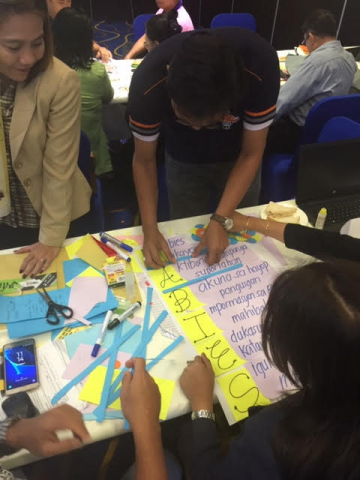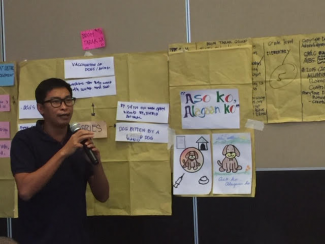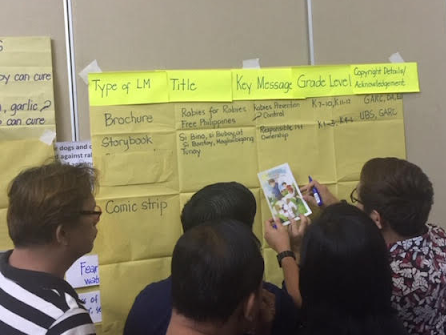Integrating rabies education into the Philippines national curriculum will reach 21 million students
The Philippines’ Department of Education (Dep Ed) and GARC have been collaborating for the past two years to integrate rabies in the national education curriculum for kindergarten through grade 10, and these lesson plans will be uploaded to the Dep Ed’s learning resources online portal before the end of the current school year, March 2019. Under the Anti Rabies Act of 2007 and as part of the National Rabies Prevention and Control Program, Dep Ed was given the mandate to integrate rabies in the national curriculum, a process that has been inspired by their motto, “For the children, For the nation” (“Para sa bata, Para sa bayan”) and made possible through additional support from the UBS Optimus Foundation and FOUR PAWS International.
Curriculum integration is the process of intersecting disparate subjects (such as health and language arts) to form an educational platform where the subject matter becomes more meaningful. Through curriculum integration, correct knowledge about rabies and other proper health seeking behavior can be inculcated in children and carried over until their adult life. It is envisioned that the national rabies education integration initiative will benefit an estimated 21 million students in 46,847 public schools as well as teachers, school health personnel, parents and the community as a whole.
The curriculum integration process was started in January 2017 and includes the development of lesson plans in relevant subjects of the national K to 10 curriculum, which covers 11 years of basic education. A phased approach was used to develop the curriculum, and started with the development of materials, and was followed by the training of teacher trainers.
Materials development included a series of workshops for curriculum mapping. In addition, the writing, development, and validation of lesson plans with key messages such as rabies as a disease, animal bite prevention, animal bite management and responsible pet ownership were prepared. A total of 78 lesson plans were developed for kindergarten and eight different subjects, including health, English, and Filipino.
One example of a kindergarten lesson plan that integrates rabies includes teaching children about different places in the community that help people such as animal bite treatment centers. This lesson was sponsored by the letter H for hospital to highlight how veterinarians (vaccinating dogs) and medical doctors (vaccinating bite victims) help the community. Another lesson plan for a health class included animal bite management as part of a lesson on first aid.
After the lesson plans were developed, selected health supervisors, school heads and teachers from more than 180 school divisions in the country attended the training of trainers workshops. Session guides were developed to provide training material on rabies and the national program. These guides also provided instruction on how to use the rabies lesson plans in schools and how to develop a regional/division plan on cascading the use of the rabies lesson plans up to the school level.
The national integration initiative was based on the results of integrating rabies education into elementary schools in GARC’s pilot project area in Ilocos Norte in 2014, where there was a general increase in knowledge on rabies, animal bite prevention, bite management and responsible pet ownership among Grades 1 to 6 students after 5 months of lessons. With these results and the development of different learning materials such as videos, storybooks, activity books, and a coloring book, GARC made the case to Dep Ed and the National Rabies Prevention and Control Committee (NRPCC) at the end of 2016 to integrate rabies prevention and responsible pet ownership education into the country’s national educational system.
Contributed by Dr. Sarah Jayme, GARC Asia Representative.
GARC would like to extend our gratitude to the teachers, education supervisors and school heads that supported the rabies education integration process as lesson plan writers; content and language validators; illustrators; session guide writers; and lead trainers. We would like to thank also government as well as private veterinarians and medical doctors who provided assistance in the technical validation of the lesson plans.
This initiative was possible through the leadership of the Department of Education Central Office (School Health Division-Bureau of Learner Support Services with technical support from Bureau of Curriculum Development, Bureau of Learning Delivery, and Bureau of Learning Resources) with technical support from the Department of Health and Department of Agriculture.


